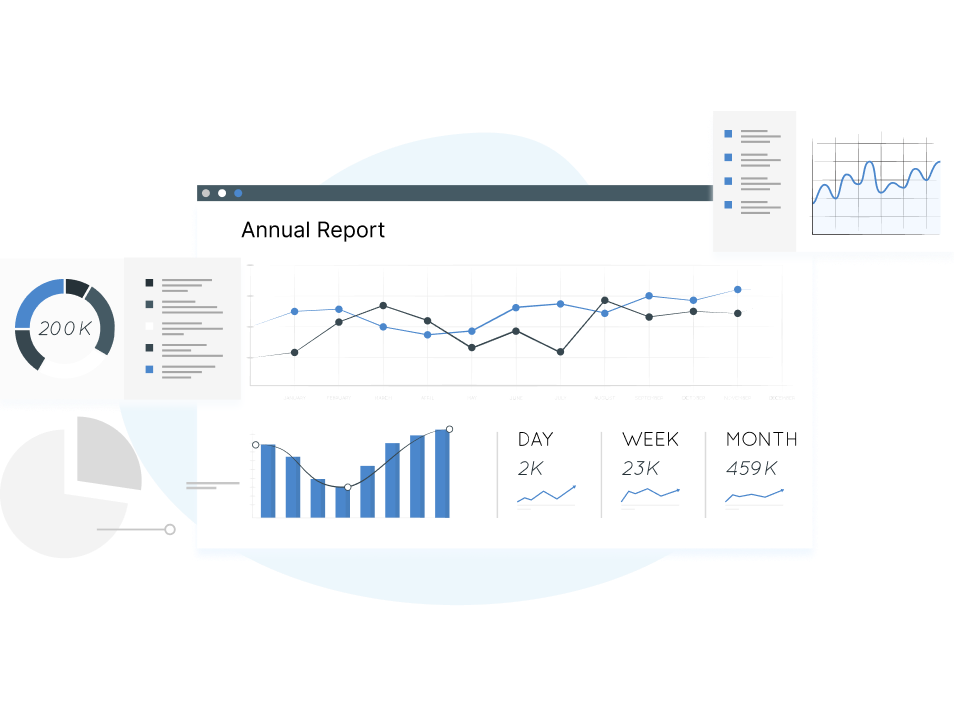If you're looking to increase the effectiveness of your marketing campaigns, you've likely heard the term "marketing attribution" thrown around.
But what is marketing attribution, and how does it work?
In this article, we'll explore the basics of marketing attribution and provide attribution marketing examples to help you better understand the concept.
What is Marketing Attribution?
Marketing attribution is the process of determining which marketing channels are responsible for driving sales. It's essential to understand that marketing attribution isn't just about measuring the effectiveness of your campaigns, but also about understanding how each channel contributes to overall your conversions and revenue.
Marketing Attribution is done by tracing the different touchpoints a customer encounters before purchasing your product.
The purpose of knowing what is Marketing attribution is to identify which marketing channels the customer interacted with had the most impact in nudging them to make the purchase.
How has Marketing Attribution evolved in recent years?
One of the reasons Marketing attribution has seen a steady rise in importance in the recent years is the rise in technology which has engendered new channels to reach out to customers.
A whole avenue of digital-first marketing channels has opened up to companies (podcasts, Youtube ads, and webinars) that were not even in the picture 10-15 years ago.
According to the Online marketing institute, it now takes marketers 7 to 13+ touches to deliver a qualified lead.
As these new platforms proliferate, it has pushed marketers to evaluate their existing frameworks and adopt newer models to measure the success of their campaigns.
To keep in tandem with the touchpoints, the marketing attribution models have also evolved to provide a level of granularity and context into the buyer’s journey that can accurately distill large volumes of data into individual-level insights that can be used to optimize your outreach efforts.
Why is Marketing Attribution important?
Here’s why Marketing Attribution is important for every marketing team:
Let’s say you spend $1000 every month on your marketing efforts which include the ads you run, the email marketing campaigns you send out, the blog you write, the webinars you conduct, etc.
As a marketing leader, you want to know which of these channels gave you a good ROI, which channels didn’t pick up, and any other details that will help you decide how much you should spend on what channel.
Say, you originally allocated the $1000 equally across channels last month:
Blogs - $300
Email Marketing Campaigns - $80
Webinar - $500
Google and LinkedIn ads - $120
With marketing attribution in place, you can tell how much each channel contributed to your overall revenue at any given time. For example, if a customer views both your email campaign and the Google ad, marketing attribution helps you understand which piece of content was instrumental in nudging the customer to make the ultimate purchase decision.
Based on this information, you can plan your upcoming month’s marketing budget accordingly to ensure maximum ROI from your channels.
Marketing Attribution Models: Different Types
There are three types of Marketing Attribution:
- Single-touch attribution
- Multi-touch attribution
- Custom Attribution
Let’s take a look at these different types of Marketing Attribution.
The single-touch marketing attribution meaning it credits the conversion to one particular marketing touch-point. Single-touch attribution is easy to implement in that you simply identify one channel as the key driver for the customer’s purchase and credit it.
There are two models within Single-touch attribution:
- First-touch attribution
- Last-touch attribution
First-touch attribution
First-touch attribution means it gives full attribution to the first touchpoint that a customer sees in their buyer’s journey.
It does not consider the additional or subsequent marketing channels that might have played a role in conversion. Instead, it gives the entire credit to the first point of interaction that the customer had before deciding to purchase.
Example of First-touch attribution
Say, a customer sees an ad for your product on Google but does not make a purchase at that point.
Later, the same customer clicks on one of your email campaigns and eventually converts.
The first-touch attribution model completely ignores the email campaign or any other interactions that might have occurred later, fully attributing only the Google ads for the conversion since it was the first touch-point.
Last-touch attribution
The last-touch attribution meaning is the exact opposite of the first-touch attribution model, giving full attribution to the last touch-point that a customer interacted with before making the purchase.
Unlike the first-touch attribution model, when using this model, you completely ignore every interaction except the very last channel, right after which the customer converted.
Example of Last-touch attribution
Let’s take the same example as above. If your customer sees an ad campaign first and later interacts with one of your email campaigns, using the last-touch attribution model, the email campaign is fully credited with the conversion.
Multi-touch attribution
Multi-touch attribution models consider the multiple touchpoints a customer interacts with in the lead-up to purchasing your product.
There are different models under Multi-touch attribution, and under each model, the weightage given to particular touch-points differs - while the multi-touch attribution model is slightly trickier to calculate, as you consider all the touch-points that a customer interacts with, these tend to be much more accurate than single-touch attribution models.
Linear Attribution
The linear attribution model records every touchpoint a customer engaged within the lead-up to purchase and gives equal weightage to all of them.
If a customer has interacted with four channels over a period of time before deciding to purchase, when using the Linear attribution model, the credit is given to all four channels equally at 25% each.
Example of Linear Attribution
Let’s assume that the three channels you use are Email marketing, PPC ads, and Podcast ads.
When using the Linear attribution model, each channel gets a 33% credit for any conversion.
Time Decay Attribution
Time Decay attribution model, as the name suggests, gives weightage to different touchpoints using time as an important dimension.
When using this model, the touchpoints that are closer to conversion get more weightage than the ones earlier in the buyer’s journey, with the premise that the latter touchpoints would have played a significant role in pushing the customer toward a purchase.
Example of Time-decay Attribution
Let’s take the same example as the previous model, with the three channels being email marketing, PPC ads, and Podcast ads.
But when using the Time-decay attribution, you factor in the order in which the customers interacted with the three channels.
Let’s assume a customer had first heard about your product over a podcast and then clicked on a PPC to visit your website and sign up for a trial - and finally clicked on one of your email promotions and converts.
Here’s how the credit breakdown looks when using Time-decay attribution:
Podcast: 20%
PPC ads: 30%
Email marketing: 50%
U-Shaped Attribution
The U-Shaped Attribution model emphasizes the first and last touchpoints over the rest.
When using this model, the premise is that the first touchpoint through which the customer got to know about your product and the last touchpoint, which ultimately helped to convert, should be given maximum credit.
It credits the first touchpoint with 40% and the last touchpoint with 40% while distributing the remaining 20% across the other touchpoints the customer interacted with before purchase.
Example of U-Shaped Attribution
In the same example as above, when using the U-Shaped Attribution, this is how your credit looks:
Podcast: 40%
PPC ads: 20%
Email Marketing: 40%
Custom Attribution Model
The Custom Attribution Model is an advanced marketing attribution model where you use data science to build an algorithmic system that uses your customer data to accurately understand how much credit should be given to each touchpoint.
This is undoubtedly the most difficult model to build and maintain. Still, it also gives the most accurate data on which marketing channels have had what impact on your customer journey.
Closing Thoughts
Knowing what is Marketing Attribution is one of the most important aspects in the role of a marketing leader—when choosing a model for your company, ensure that you have all the relevant data points needed to make an accurate, informed decision.








































